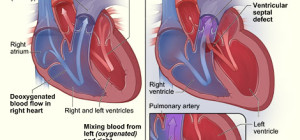 In the past few years science has made major advances in emergency cardiac care and tools used to jumpstart the heart in the event of an emergency. This has increased the chances of living for anyone who has a sudden cardiac arrest, which despite this advancement still remains the leading cause of death in the developed world. 350,000 Americans die every year from cardiac arrest. Almost half of these people die almost instantly and away from the hospital because their heart just suddenly stops functioning. The majority of deaths are a result of no warnings signs exhibited by the disease. Disturbance in the rhythm or ventricular fibrillation is what causes the majority of sudden cardiac arrest instances according to doctors.
In the past few years science has made major advances in emergency cardiac care and tools used to jumpstart the heart in the event of an emergency. This has increased the chances of living for anyone who has a sudden cardiac arrest, which despite this advancement still remains the leading cause of death in the developed world. 350,000 Americans die every year from cardiac arrest. Almost half of these people die almost instantly and away from the hospital because their heart just suddenly stops functioning. The majority of deaths are a result of no warnings signs exhibited by the disease. Disturbance in the rhythm or ventricular fibrillation is what causes the majority of sudden cardiac arrest instances according to doctors.
Why is ventricular fibrillation dangerous?
The big reason why it's dangerous is because it will cut the supply of blood directly to vital organs and the brain. Any damage to the ventricles resulting from cardiac arrest if not treated in time will result in death. This is because ventricles are the main blood vessels responsible for pumping blood from the heart. This oxygenated blood combined with other nutrients is delivered to the cells, organs and even the brain. So, if these structures do not get the blood needed they will shut down for sure. There are only a few minutes within which the body will live and during which function needs to be restored or it will result in permanent brain damage leading to death in 80% of the cases.
Treating ventricular fibrillation
The most effective way of treating ventricular fibrillation is by using electric shocks directed at the victim's chest. This method of revival is referred to as defibrillation. However, there are different types of defibrillation and the rate of survival depends on what type was used.
- In most hospitals experienced doctors or paramedics will use ventricular fibrillation with a great degree of success mainly because they have the experience to dial up the electric shock based on the feedback they receive.
- Outside of the hospital a cardiac arrest victim will have a lower chance of survival unless defibrillation is performed within five minutes. A victim's revival can be impossible even if there is a CPR specialist around.
- It is important to note that every five minutes that a cardiac arrest victim is left without ventricular fibrillation or defibrillation their chances of survival is reduced by 50%. Once 10 minutes has passed, the chances of survival are zero.
 The role of CPR or Cardiopulmonary resuscitation
The role of CPR or Cardiopulmonary resuscitation
CPR does save lives by providing a temporary artificial circulation and breathing mechanism to the victim. CPR works to deliver a limited supply of oxygen and blood to the body and brain until a good defibrillator can be used. That said CPR does not always work and needs to be used in conjunction with defibrillation to save a person's life. You should never mistake CPR as a replacement for ventricular defibrillation.
Operating an automated external defibrillator
If you find yourself in a situation where there is an AED near you, there are a number of steps you'll need to follow in order to use an external defibrillator. The steps below are outlined for someone who has no formal defibrillator training.
- The majority of automated external defibrillators just need to be turned on. Locating the ‘ON' button on most units is easy; it's almost always located on the top of the unit.
- After the AED is on, it will activate a computer voice program that will talk you through the procedure.
- The program will guide you through placing adhesive electrode pads, and how to plug in the pads to the AED.
- Many of the latest systems will also automatically analyze the victim's ECG rhythm in order to determine if another shock or even if the first shock is needed. However, for newbie users it is important that they do not touch the victim when the machine is working on monitoring ECG because doing so will disturb the reading.
- If the automated machine has determined that a shock is needed, it will work on charging itself and will prompt you when to deliver the shock. There will be a button that has to be pressed.
After the victim has been shocked it will ask you to perform CPR.
Mr. Mark L. is a leading ventricular defibrillation expert with over twenty years in the medical profession. He currently works with design experts who manufacture automated defibrillators. In addition he also teaches CPR and general First Aid out of his office in Sydney.







